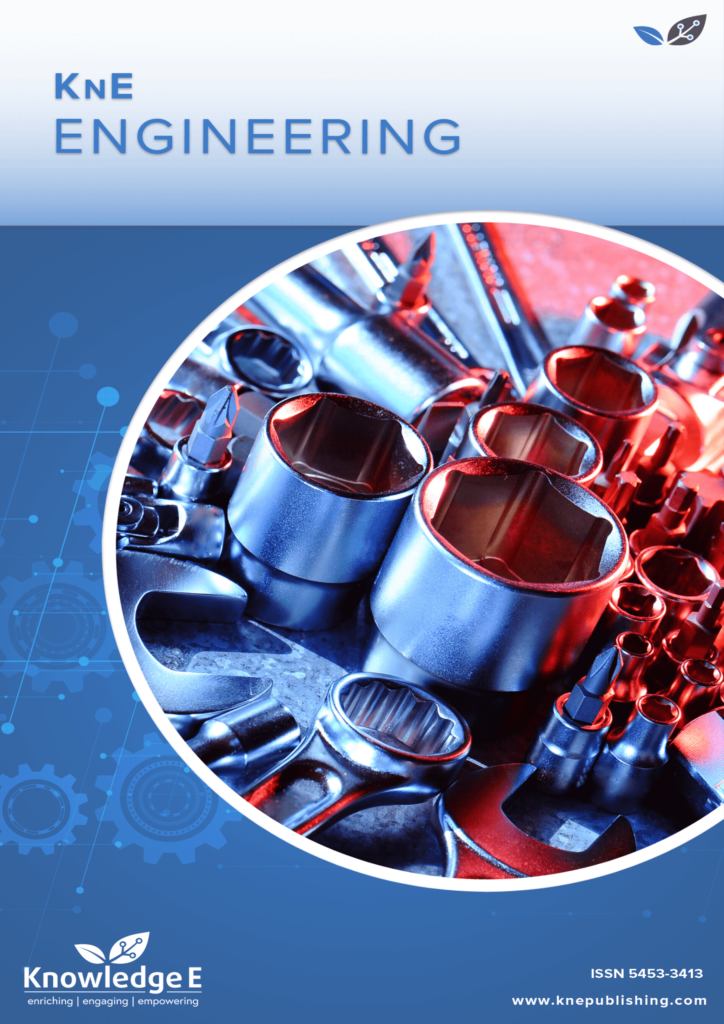
KnE Engineering
ISSN: 2518-6841
The latest conference proceedings on all fields of engineering.
Segmentation and Feature Extraction of Human Gait Motion
Published date:Feb 09 2017
Journal Title: KnE Engineering
Issue title: The International Conference on Design and Technology
Pages:267-273
Authors:
Abstract:
This paper presents segmentation and feature extraction of human gait motion. The methodology of this paper focuses on segmenting ‘XYZ’ position curves, in reference to time of gait motion based on the velocity or acceleration of the movement. The extracted features include amplitude, time, and equally spaced sample data, maximum and minimum for each segment. The results can be used for reconstruction of a viable dataset that is critical for simulation and validation of human gaits. We propose a method to enables the fitting of the same curve with limited data. Such data sets may prove valuable for studying impairments and improving simulations of rehabilitation tools, and statistical classification for researchers worldwide.
References:
[1] C. A. McGibbon, Toward a Better Understanding of Gait Changes With Age and Disablement: Neuromuscular Adaptation, Exercise and Sport Sciences Reviews, 31, 102–108, (2003), 10.1097/00003677- 200304000-00009.
[2] M. Vukobratovic, and D. Juricic, Contribution to the Synthesis of Biped Gait, Biomedical Engineering, IEEE Transactions on, BME-16, 1–6, (1969), 10.1109/TBME.1969.4502596.
[3] M. Pantic, A. Pentland, A. Nijholt, and T. Huang, Human Computing and Machine Understanding of Human Behavior: A Survey, in Artifical Intelligence for Human Computing, T. Huang, A. Nijholt, M. Pantic, and A. Pentland ed., vol. 4451, Springer, Berlin Heidelberg, 47–71, (2007).
[4] R. B. Davis Iii, S. Õunpuu, D. Tyburski, and J. R. Gage, A gait analysis data collection and reduction technique, Human Movement Science, 10, no. 10, 575–587, (1991).
[5] T. B. Moeslund, A. Hilton, and V. Krüger, A survey of advances in vision-based human motion capture and analysis, Computer Vision and Image Understanding, 104, no. 11, 90–126, (2006), 10.1016/j.cviu.2006.08.002.
[6] S. J. M. Bamberg, A. Y. Benbasat, D. M. Scarborough, D. E. Krebs, and J. A. Paradiso, Gait Analysis Using a Shoe-Integrated Wireless Sensor System, Information Technology in Biomedicine, IEEE Transactions on, 12, 413–423, (2008), 10.1109/TITB.2007.899493.
[7] F. Juefei-Xu, C. Bhagavatula, A. Jaech, U. Prasad, and M. Savvides, Gait-ID on the move: Pace independent human identification using cell phone accelerometer dynamics, in Biometrics: Theory, Applications and Systems (BTAS), 2012 IEEE Fifth International Conference on, 2012, pp. 8–15.
[8] J. D. M. Robert Goldma, Jr, Creating Realistic Data Sets with Specified Properties via Simulation, International Conference on Technology in Collegiate Mathematics, 18, (n.d.).
[9] N. A. Sharkey, and A. J. Hamel, A dynamic cadaver model of the stance phase of gait: performance characteristics and kinetic validation, Clinical Biomechanics, 13, no. 9, 420–433, (1998), 10.1016/S0268-0033(98)00003-5.
[10] H. C. Sun, and D. N. Metaxas, Automating gait generation, presented at the Proceedings of the 28th
annual conference on Computer graphics and interactive techniques, (2001).
[11] K. Aminian, B. Najafi, C. Büla, P. F. Leyvraz, and P. Robert, Spatio-temporal parameters of gait measured by an ambulatory system using miniature gyroscopes, Journal of Biomechanics, 35, no. 5, 689–699, (2002), 10.1016/S0021-9290(02)00008-8.
[12] D. Cunado, M. S. Nixon, and J. N. Carter, Automatic extraction and description of human gait models for recognition purposes, Computer Vision and Image Understanding, 90, no. 4, 1–41, (2003), 10.1016/S1077-3142(03)00008-0.
[13] T. B. Moeslund, and E. Granum, A Survey of Computer Vision-Based Human Motion Capture, Computer Vision and Image Understanding, 81, no. 3, 231–268, (2001), 10.1006/cviu.2000.0897.
[14] M. Goffredo, R. D. Seely, J. N. Carter, and M. S. Nixon, Markerless view independent gait analysis with self-camera calibration, in Automatic Face & Gesture Recognition, 2008. FG ’08. 8th IEEE International Conference on, 2008, pp. 1–6.
[15] V. T. I. J. B. Saunders, and H. D. Eberhart, The Major determinants in normal and pathological gait, Bone Joint Surg. Am., 35A, 543–558, (1953), 10.2106/00004623-195335030-00003.
[16] M. O. C. K. M. Culhane, D. Lyons, and G. M. Lyons, Accelerometers in rehabilitation medicine for older adults, Age Ageing, 34, no. Nov, 556–650, (2005), 10.1093/ageing/afi192.
[17] J. McCormick, K. Vincs, S. Nahavandi, and D. Creighton, Learning to dance with a human, (2013).
[18] P. T. K. John D. Willson, PhD Gait Data Sets, ed: University of Wisconsin-LaCrosse, (2011).